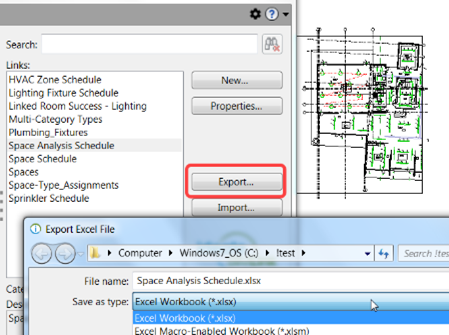Flawlessly Import Excel into Revit: Increase Your Effectiveness
Wiki Article
Understanding the Art of Data Assimilation: How to Seamlessly Import Excel Data Into Revit
Are you battling to import Excel files right into Revit smoothly? Look no more! In this write-up, we will direct you via the procedure of mastering the art of information assimilation. Discover the significance of smooth assimilation in Revit and explore the Excel file style for Revit combination. Obtain prepared to prepare your Excel data easily and follow our detailed overview to import data right into Revit. With our finest methods, you'll accomplish data integration success quickly. Allow's begin!Recognizing the Relevance of Data Assimilation in Revit
Understanding the significance of information assimilation in Revit is essential for seamless importing of Excel files. It allows you to successfully upgrade and handle details throughout the whole job when you integrate data from Excel right into Revit. This combination guarantees that your design and construction procedure is up-to-date and exact.By incorporating data, you can conveniently import and upgrade specifications, schedules, and also geometry in Revit. This gets rid of the requirement for manual information entry, conserving you time and minimizing the danger of mistakes. With Revit's information integration capacities, you can preserve consistency and precision in your project, while additionally enhancing collaboration amongst staff member.

Checking Out the Excel Data Style for Revit Integration

In order to successfully integrate Excel files right into Revit, it is critical to make certain that the data is formatted properly. This includes effectively identifying columns and rows, along with structuring the data in a way that is compatible with Revit's information schema. Revit uses details parameters and classifications to arrange information, so it is essential to line up the Excel information with these criteria to make certain a seamless integration.
Furthermore, it is essential to note that Revit just supports particular information types when importing from Excel. These consist of text, numbers, and days. Any various other data kinds, such as formulas or conditional format, will certainly not be recognized by Revit and might trigger concerns during the assimilation process.
Preparing Your Excel Information for Seamless Import Into Revit
To ensure a smooth combination procedure, you'll need to properly style and tag the columns and rows in your Excel data prior to importing it right into Revit. Since it allows Revit to properly analyze and arrange your information, this step is vital. Begin by analyzing your Excel information and determining which columns and rows consist of pertinent details for your Revit project. After that, make certain to classify each column with a descriptive and clear header. This will certainly help you and others easily comprehend the function of each column and stay clear of complication throughout the import procedure.Next, guarantee that the data in import excel into revit each column is correctly formatted. If you have a column for measurements, make certain that all measurements are constantly formatted in the exact same systems of dimension. Revit depends on constant formatting to accurately analyze and import information.
In addition, it is crucial to look for any type of empty cells or inconsistencies in your information. Revit might not have the ability to check out or import data from cells that are vacant or consist of errors. It is recommended to review your Excel information and clean up any incongruities before importing it into Revit.
Step-By-Step Overview to Importing Excel Data Into Revit
When you have actually correctly formatted and labeled your Excel information, you can easily import it right into Revit by following this detailed guide. To start, open Revit and navigate to the "Insert" tab. revit tool.Next, a dialog box will certainly appear, enabling you to customize the import setups. Here, you can select the worksheet you intend to import, specify the array of cells to import, and select the ideal units for your data. As soon as you've made your choices, click "OK" to proceed.
Revit will currently display a preview of your Excel information. Take a moment to examine the preview and guarantee that everything looks appropriate. If required, you can make adjustments to the import settings by clicking the "Settings" button.
Finest Practices for Information Integration Success in Revit
Make certain you adhere to these ideal practices to make sure effective integration of information in Revit. Most importantly, it is essential to arrange your data in Excel before importing it into Revit. This means making sure regular naming conventions, proper formatting, and precise information depiction. Next off, utilize Revit's built-in tools for information mapping. This will certainly permit you to match the columns in your Excel file with the corresponding specifications in Revit. Be mindful of the information and devices kinds when mapping the information, as any kind of discrepancies can lead to errors in the integration process.Another crucial method is to routinely confirm and update your data. Furthermore, make use of information validation devices within Revit to identify any kind of errors or incongruities in the integrated information.
Finally, it is advised to establish a clear operations for data assimilation. This includes specifying obligations and duties, setting up an interaction channel in between employee, and developing a regular cadence for information updates and reviews. By complying with these best methods, you can make certain a successful and seamless assimilation of data in Revit, eventually boosting the efficiency and accuracy of your task.
Conclusion
In final thought, understanding the art of information assimilation is critical for seamless import of Excel files into Revit. Comprehending the significance of information combination in Revit is the initial action in the direction of effective assimilation.When importing information from Excel right into Revit, it is crucial to recognize the documents layout and exactly how it can influence the assimilation process (import excel into revit). Revit makes use of certain specifications and classifications to arrange data, so it is essential to line up the Excel data with these specifications to guarantee a seamless assimilation
Be conscious of the devices and information kinds when mapping the information, as any kind of inconsistencies can lead to errors in the integration procedure.
Furthermore, make use of information recognition devices within Revit to determine any mistakes or incongruities in the incorporated data.

Report this wiki page